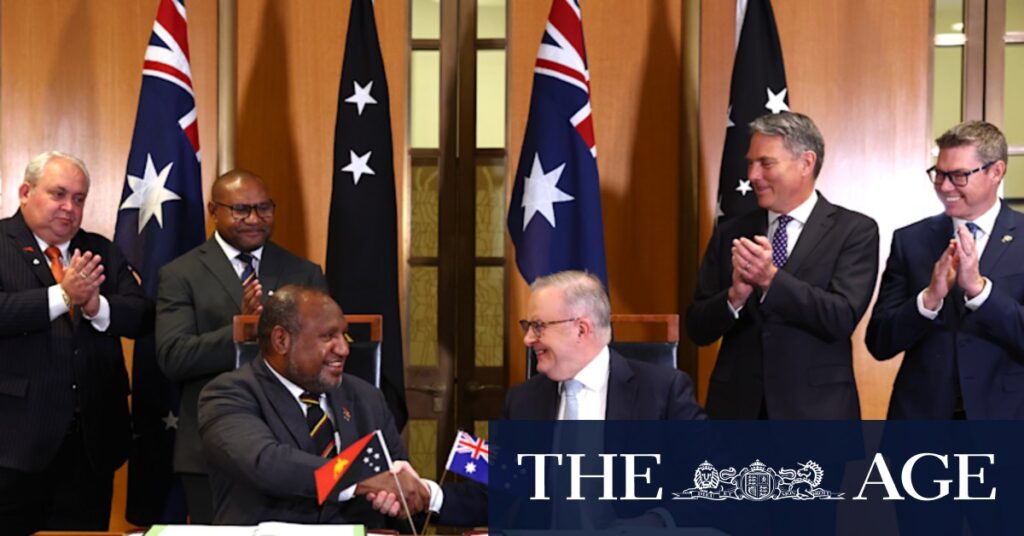
Papua New Guinea has characterized its newly signed defense treaty with Australia as a protective measure akin to a fence between two homes, rather than a shield against Chinese influence. This comes after Prime Ministers Anthony Albanese and James Marape formalized the agreement on Monday.
The Pukpuk Treaty, Australia’s first formal alliance since the ANZUS Treaty of 1951, commits both nations to mutual defense and regional stability across the South Pacific. This region has increasingly become a focal point for China’s expanding diplomatic reach.
The treaty was initially slated for signing in Port Moresby last month during Albanese’s visit for Papua New Guinea’s 50th independence anniversary. However, delays occurred due to the PNG cabinet’s inability to form a quorum to ratify the pact until recently.
Historical Context and Strategic Importance
Similar to the ANZUS Treaty, the Pukpuk agreement stipulates that an armed attack on either nation in the Pacific would be considered a threat to both, endangering regional peace and security. This agreement, proposed by Marape, also facilitates cross-training and service opportunities for citizens in each other’s defense forces.
Speaking from Canberra, Marape emphasized that the treaty is not directed at China but rather underscores the longstanding ties between PNG and Australia. “This treaty was not conceived out of geopolitics or any other reason, but out of geography, history, and the enduring reality of our shared neighborhood,” Marape stated.
He further elaborated, “It is about one bigger fence that secures two houses that has its own yard space. This is not a treaty that sets up enemies but consolidates friendships.” Marape assured that China has been informed of PNG’s security partnership with Australia.
Australia’s Strategic Pillars
Prime Minister Albanese, who is set to meet with U.S. President Joe Biden in Washington later this month, highlighted that Australian foreign policy is anchored on three pillars: the U.S. alliance, regional engagement, and multilateralism. He described the Pukpuk Treaty as a manifestation of these principles.
“This is a concrete example of Australia accepting the invitation and the idea from Papua New Guinea that we step up this relationship to an alliance,” Albanese remarked. “I see this very much as lifting our relationship to the next level.”
The treaty also restricts both nations from entering agreements with other countries that might compromise the Pukpuk Treaty. It includes provisions for increased joint military exercises, enhanced intelligence sharing, and the recruitment of citizens into each other’s defense forces.
Implications and Future Prospects
Currently, PNG’s defense forces comprise approximately 3,990 personnel, primarily in the army. Marape has proposed that up to 10,000 PNG citizens could serve with the Australian Defence Force under the treaty’s terms. Albanese suggested that over time, “it could be really substantial numbers.” He noted that PNG citizens would join residents from the Five Eyes nations—Australia, New Zealand, Britain, Canada, and the United States—in having the right to serve in the ADF.
“People who are permanent residents in Australia will have the same rights as current members of Five Eyes to serve and participate in the Australian Defence Force,” Albanese explained.
This development follows a broader trend of strategic realignments in the Pacific, as nations navigate the complexities of regional security dynamics. The Pukpuk Treaty marks a significant step in fortifying the Australia-PNG alliance, with potential implications for regional geopolitics and defense collaborations.







